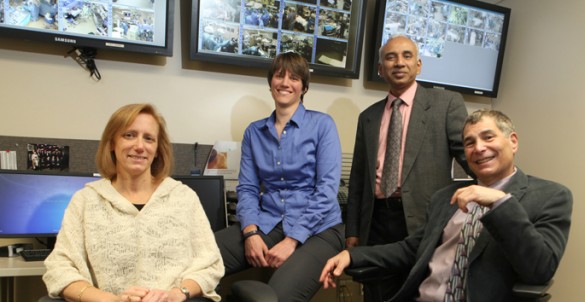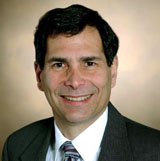
A multidisciplinary Vanderbilt team with deep experience in improving patient safety and technology usability has received a three-year, $800,000 Department of Energy grant to help nuclear power plant operators better perform their jobs.
Principal investigator for the grant, Matthew B. Weinger, M.D., professor of Anesthesiology, Biomedical Informatics and Medical Education, is a nationally known leader in the field of human factors research.
Weinger is the director of the Vanderbilt Center for Research and Innovation in Systems Safety (CRISS), as well as a physician at the VA Tennessee Valley Healthcare System.
The DOE grant, administered by Idaho National Laboratory, is a collaboration between Vanderbilt University Medical Center faculty (Weinger, Dan France, Ph.D., MPH, and Shilo Anders, Ph.D., who both work in CRISS), Vanderbilt School of Engineering faculty (Julie Adams, Ph.D., associate professor of Computer Science and Computer Engineering, and Sankaran Mahadevan, Ph.D., professor of Civil and Environmental Engineering and Mechanical Engineering), and experts at AREVA, a multinational corporation that specializes in the design and construction of nuclear power plants.
Human factors research is applying knowledge about human abilities, limitations, and other human characteristics to the design of equipment, tasks and jobs. Research by CRISS investigators has focused on improving the conditions under which clinicians function in high-risk, high-consequence medical environments such as the operating room and intensive care unit. In particular, they have developed techniques to measure clinician performance during actual patient care and have applied those techniques to study how the design of technology and workspaces affect performance. With the DOE grant, Weinger and his team will apply these techniques to another high-risk domain, the nuclear power plant control room.
“There are a number of fields, including anesthesiology, commercial aviation and nuclear power, in which the practitioners must vigilantly observe multiple monitors and displays while maintaining readiness to respond to a change in status such as an abnormal or emergency situation,” Weinger said.
“In health care, we have taken advantage of modern digital technology to make our jobs easier, safer and more effective. Our team has studied the implementation of new technology and learned what works and what doesn’t work. The Department of Energy grant reviewers felt that we had a lot to offer the nuclear power industry in their efforts to safely upgrade their older control rooms to digital technology.”
In the United States there are 62 commercially operating nuclear power plants with 100 nuclear reactors in 31 states. Very few new reactors are being built, and older plant control rooms often still have analog controls and displays. The nuclear industry has been slow to replace older technology given its long history of safe and reliable performance. But, for many reasons, they are now transitioning to digital technology.
As is often the case during periods of technology transition, U.S. nuclear power control rooms can be fully analog, hybrid (a mix of analog and digital systems), or, in a few cases, completely digital. The designs directly affect how an operator scans the complex displays and understands the plant’s status.
The DOE grant funds an analysis of these different situations with the goal of developing evidence-based practices for upgrading control room technologies. In the initial year of the study, Weinger and his team will observe nuclear power plant operators during full-scale simulations and will interview nuclear power plant operators and supervisors. The results of these observations and interviews will then be used to develop performance evaluation tools, recommendations on how the control rooms are designed and proposals for improved job workflow.
This project stemmed from collaboration between the two industries at a joint conference in July 2012. The proceedings of that meeting, Risk and Reliability in Healthcare and Nuclear Power: Learning from Each Other, were published by the Association for the Advancement of Medical Instrumentation.
“It is quite an honor to receive this DOE grant and to be recognized for our contributions in improving performance of workers in highly challenging settings,” Weinger said. “We have just begun to work on this project, and we are eager to do our part in improving the safety of one of our nation’s key energy resources.”















